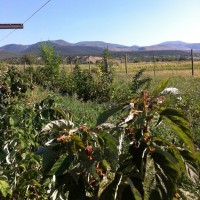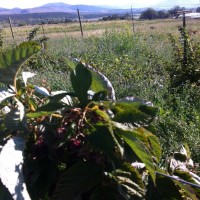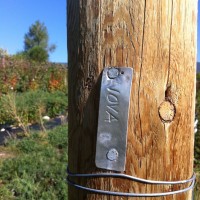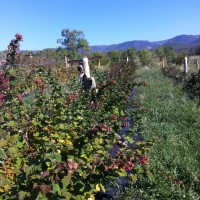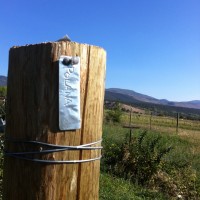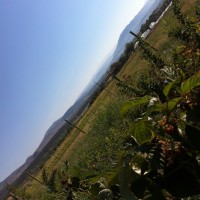The Final Year of Research
This year we experienced out first real production from the berries. several varieties produced well, while several others did not produce well at all. The less productive varieties where the same varieties that froze back to the ground last winter. Some varieties produced a late crop in September, but these were hurt this year by a lack of water – our irrigation went off August 2, about a month earlier than usual. We did have a couple of rains later in the season, but it wasn’t enough and the berries clearly suffered from the stress caused by lack of water.
The link below takes you to the embedded data table where we tracked all of the harvest from the last three years. Each variety was trapped in each harvest was recorded. Also we took several measurements of berry size by counting the number of berries required to fill Half pint container. Please note that the link below contains a spreadsheet with two separate sheets one she is for the quantity harvested, the other sheet is for the berry sizes.
View Berry research data tables
Summary of Findings
Overall one of the biggest overall conclusions was the importance of frost hardy varieties for our area. Even in the mild winter of 2011 – 2012, several varieties froze to the ground greatly reducing the following years harvest. Another important conclusion from the commercial harvesting perspective, is that blackberries are much easier to pick than raspberries. The thornless BlackBerry varieties we grew were exceptionally easy to deal with and harvest off of. In addition, the consistently large berry size of the BlackBerries meant that filling pints of berries went much more quickly. As I add to the Berry patch I plan to plant mostly BlackBerries from this point on.
The Berry Varieties – Observations & Results
Freeze Sensitivity
- Heritage Everbearing
- Polana Everbearing
- Killarny Red Raspberry
- Triple Crown thornless Blackberry (very long canes, ends died back)
- Chester Thornfree Blackberry (very long canes, even more died back)
- Encore Summer Fruiting Raspberry
- Nova Summer Fruiting Raspberry
- Bristol Summer Fruiting Black Raspberry
- Encore Summer Fruiting Raspberry
- Nova Summer Fruiting Raspberry
Size and Ease of Picking
The raspberries were generally small and it took an average of 109 raspberries to fill a 6 oz container. The blackberries were consistently larger, with the smallest blackberry matching the largest raspberry. It took an average of only 41 blackberries to fill a 6 oz container. In addition, the thornless blackberries were truly thorn free, almost soft to the touch. they were a pleasure to work in, for all stages of production – pruning, trellising and harvest. Unless the market becomes saturated, I would plant these thornless blackberries over any of the other berries. Chester stands out as the biggest producer in out trials. On the raspberry side, Kilarny was the clear winner, producing early and over a long period with large berry size. Bristol, the only black raspberry in our trial, was also a large producer, and although the berries were small on average, they were borne in exposed clusters, making them a bit easier to harvest.
Final Pictures
These pictures show the drought damage on some of the berries this year.

